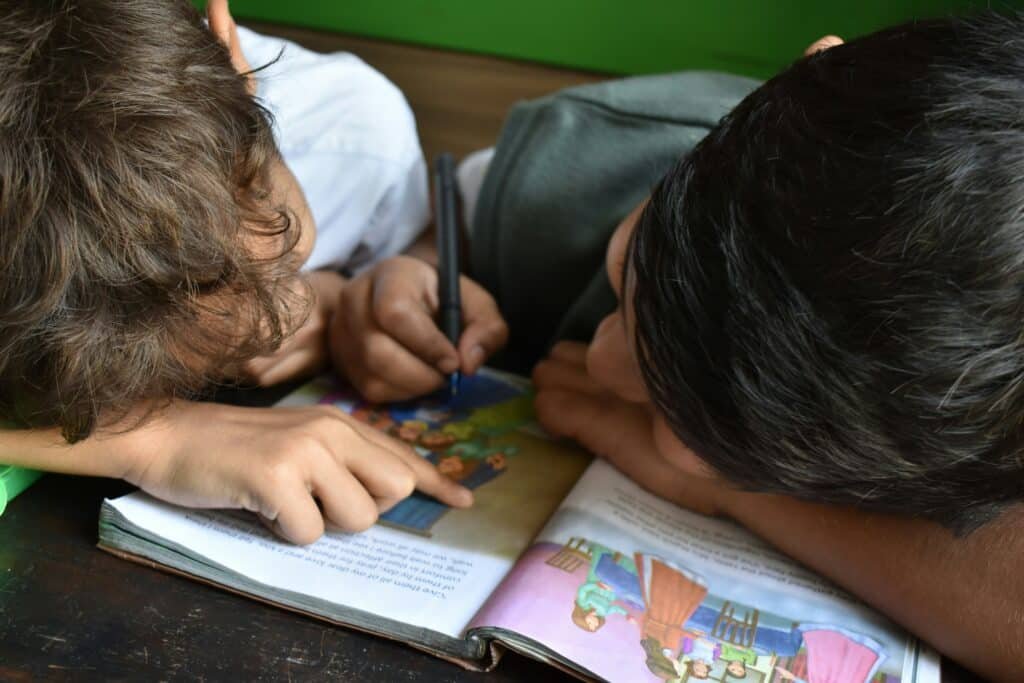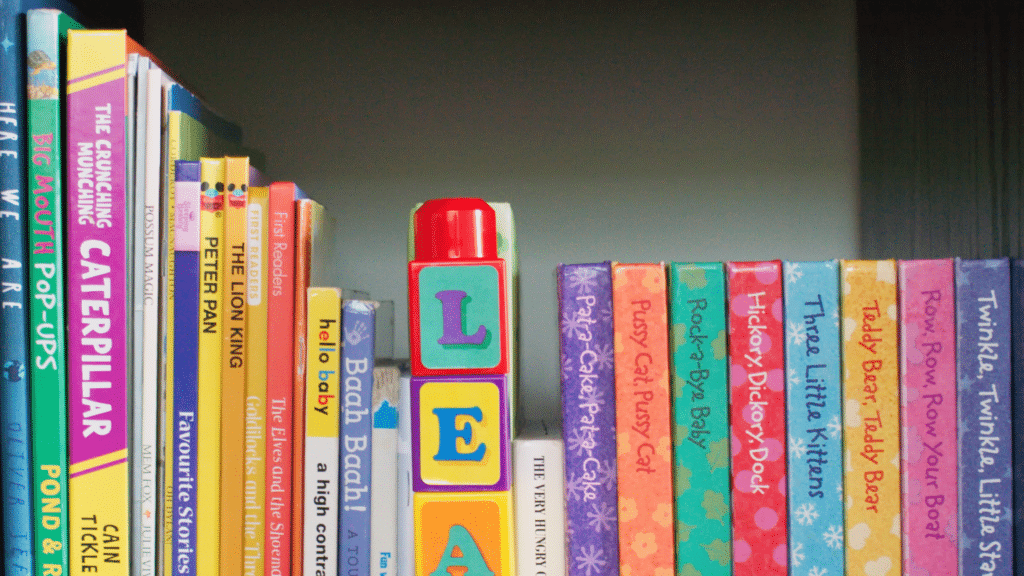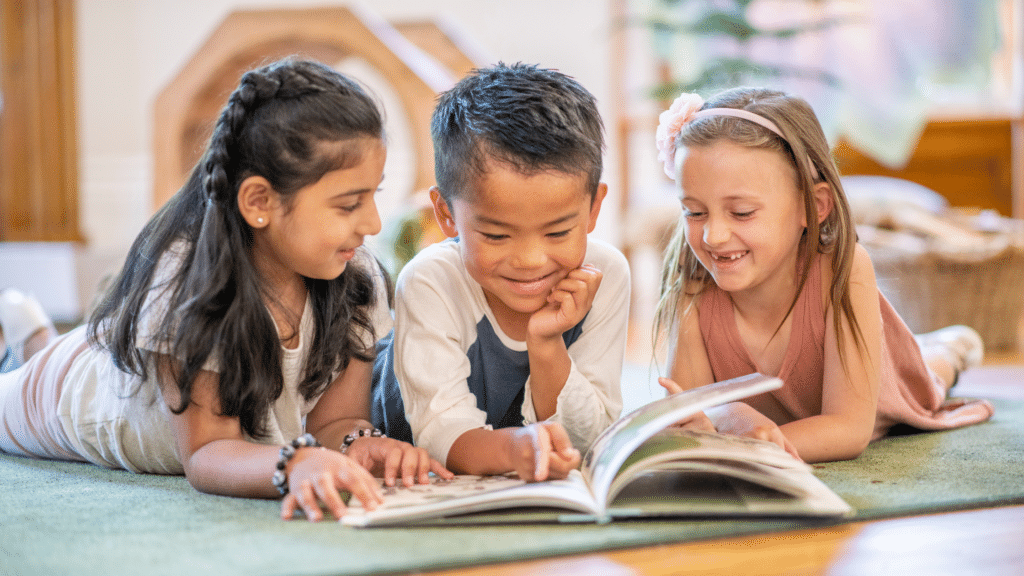For elementary school students, learning a new language can be both challenging and exciting. New words, unfamiliar grammar, and the need to communicate can sometimes feel overwhelming. However, there’s a powerful tool that can help—children’s literature.
Children’s books are more than just entertaining stories; they have the power to transform ESL education by enhancing language skills and cultural understanding. Unlike dry textbooks, these engaging narratives make learning English fun and enjoyable. This article explores how children’s literature can profoundly impact ESL learners and support them in their English language learning journey.
Table of Contents
How does Children’s Literature help ESL students?
At its core, children’s literature serves as a gateway to imagination, captivating young minds with vibrant narratives and vivid characters. In the ESL classroom, this enchanting tool becomes a sanctuary where language barriers dissolve, and learning transcends conventional boundaries.
Through carefully selected stories and engaging activities, educators harness the magic of children’s literature to cultivate language skills organically. Whether it’s exploring whimsical worlds or unraveling moral dilemmas, each literary adventure becomes a stepping stone in the ESL journey.

Cultural Kaleidoscope
One of the most compelling facets of children’s literature lies in its ability to bridge cultural divides. Within the pages of a storybook, students encounter a kaleidoscope of perspectives, traditions, and customs, fostering empathy and cultural awareness.
For ESL learners, this immersion in diverse narratives not only enhances language proficiency but also nurtures a deep appreciation for global heritage.
By exposing students to stories from various cultural backgrounds, educators broaden their horizons, challenging stereotypes and fostering respect for cultural differences. Through discussions, activities, and projects inspired by these stories, students not only learn the language but also gain valuable insights into the customs, values, and beliefs of people from around the world.
This cross-cultural exchange not only enriches the ESL curriculum but also nurtures students’ sense of global citizenship, preparing them to navigate an increasingly interconnected and diverse world with empathy and understanding.
Storytelling
Storytelling has long been revered as a timeless art form, transcending linguistic barriers to convey universal truths. In the ESL classroom, the art of storytelling takes center stage, empowering students to engage with language in a dynamic and immersive manner. Imagine a classroom transformed. The teacher, no longer a lecturer, becomes a captivating storyteller, weaving tales with expressive voices, animated gestures, and dramatic pauses.
Students, captivated by the narrative, are no longer passive listeners but active participants. The teacher strategically places pauses and asks open-ended questions, inviting them to predict what happens next, describe the emotions of characters, and even participate in sound effects – all in the target language.
This interactive approach goes beyond mere vocabulary acquisition. It fosters listening comprehension as students actively listen for clues and details. The repeated exposure to correct grammar structures used naturally within the narrative paves the way for the development of speaking fluency.
Students subconsciously absorb how language functions in real-world contexts, empowering them to express themselves more confidently and accurately.
Furthermore, children’s literature, with its well-defined narrative structure, offers ESL learners a valuable scaffolding framework. The familiar story arc – introduction, rising action, climax, falling action, and resolution – provides a foundation for comprehension.
As familiar elements like character introductions and problem-solving scenarios unfold, students can anticipate what comes next and build connections between events, fostering a deeper understanding of the story. This context-rich storytelling environment allows them to grasp the meaning of new vocabulary and grammatical structures within the broader narrative context.
They don’t just memorize isolated words; they see them used purposefully to move the story forward, making retention and application significantly easier.

Fostering Critical Thinking and Creativity
Children’s literature goes beyond just teaching language; it cultivates essential skills such as critical thinking and creativity. Thought-provoking narratives become springboards for intellectual exploration. Consider a story with a character facing a moral dilemma.
The teacher can pose open-ended questions such as, “What would you do if you were in the character’s shoes?” or “Why do you think the character made that decision?”. These questions spark critical thinking as students analyze characters’ actions, infer motives, and explore the themes embedded within the story. This process transcends linguistic boundaries, as students develop problem-solving and analytical skills that extend beyond language learning.
ESL learners, in particular, stand to gain immensely from this multifaceted approach. Discussing complex themes and expressing their thoughts in a new language pushes them to stretch their linguistic abilities while developing their analytical skills.
As they delve deeper into narratives, they learn to articulate their opinions and arguments in English, fostering confidence and communication skills. This journey of grappling with new content and expressing themselves creatively becomes a cornerstone in the holistic development of ESL learners. By nurturing a love for literature and fostering creative expression, children’s literature unlocks a world of possibilities, not just in language acquisition but also in intellectual and personal growth.
Benefits of Children’s Literature in ESL Education
- Building Vocabulary
Picture books are a treasure chest overflowing with opportunities for vocabulary development in the ESL classroom. The magic lies in the synergy between captivating illustrations and simple text. Imagine a student encountering a picture book with a vibrant illustration depicting a child flying a kite. Alongside the image, the text reads, “The red kite soared high in the blue sky.” T
he student, drawn to the colorful image, readily grasps the meaning of “kite” and “red” through the visual representation. This connection between image and word fosters a deeper understanding and retention of new vocabulary.
Engaging stories take vocabulary development a step further. By integrating newly learned words into captivating narratives, children’s literature allows students to see these words used in context. Think about a story where a character encounters a grumpy troll guarding a bridge.
The student, having previously learned the word “grumpy” from a picture book, can now understand the troll’s emotional state through the context of the story. This exposure to vocabulary in a meaningful and engaging way allows students to develop a natural grasp of word meaning and usage, making them more confident language learners.
- Grammar in Action
Children’s literature offers a unique advantage in grammar acquisition: it allows students to learn by immersion. Unlike traditional grammar drills that can feel sterile and repetitive, children’s literature exposes students to proper grammar structures seamlessly and organically.
Imagine a story filled with everyday conversations between characters. Students, captivated by the narrative, subconsciously absorb how sentences are constructed, how tenses are used, and how questions are formed. This repeated exposure to correct grammar usage woven into the fabric of the story allows students to begin internalizing these structures without the formality of rote memorization.
As they delve deeper into the world of children’s literature, students begin to use these grammar structures intuitively in their own spoken and written English. This organic approach to grammar learning fosters a deeper understanding of the language’s mechanics, allowing students to communicate more effectively.

- Fueling Fluency
The beauty of children’s literature lies in its ability to spark a love for reading in young learners. Captivating plots filled with relatable characters act as a powerful magnet, drawing students into the stories. Imagine a student enthralled by a tale of a brave young explorer embarking on a wondrous journey.
The desire to discover what happens next fuels a passion for reading independently. With each page turned, students encounter new vocabulary and sentence structures, further enriching their linguistic repertoire.
This consistent exposure to the English language builds fluency, allowing students to read with greater speed and confidence. They begin to recognize familiar words and sentence patterns, making them feel more comfortable navigating the world of written English.
As their fluency develops, so too does their enjoyment of reading, creating a positive cycle that motivates them to explore more complex and diverse texts.
- Cultural Gems
Children’s literature transcends language barriers, offering a window into the rich tapestry of different cultures. Folktales, myths, and stories rooted in various traditions provide a platform for cultural understanding and appreciation.
Imagine a student reading a Japanese folktale about a mischievous tanuki (raccoon dog). Through this story, the student learns not only new vocabulary related to Japanese folklore but also gains valuable insights into Japanese customs and beliefs.
Children’s literature fosters a sense of global citizenship by encouraging empathy and understanding. As students encounter stories from diverse backgrounds, they begin to appreciate different perspectives and traditions. This exposure broadens their worldview and allows them to develop a deeper appreciation for the world’s cultural richness.
- Confidence Boost
Successfully navigating a children’s book is a significant achievement for young ESL learners. Imagine a student who, with newfound confidence, proudly reads a picture book aloud to the class. The sense of accomplishment that washes over them is a powerful motivator.
This newfound confidence in their language skills fuels their desire to tackle more challenging texts, pushing them to expand their vocabulary and reading abilities.
This positive reinforcement cycle fosters a lifelong love of learning. Children who experience success with children’s literature feel empowered to continue their journey with the English language.
They approach new challenges with a sense of confidence, knowing that with dedication and practice, they can achieve their goals. This sets them on a path of continuous learning and exploration, fostering a lifelong love for the English language and the world it unlocks.

Tips for Teachers and ESL Book Recommendations
As educators, we hold the key to unlocking the full potential of children’s literature. Here are some strategies to turn your classroom into a haven for joyful English language acquisition through literature:
- Choosing the Right Books
The foundation of a successful literature-based ESL classroom lies in selecting the right books. Age-appropriateness is crucial. For younger learners, picture books with captivating illustrations and simple language are ideal. As students progress, you can gradually introduce chapter books with more complex narratives.
If you are on the lookout for some new books you can find some fun books here at Makostars. There is a delightful selection of books by beloved authors Roald Dahl and Dr. Seuss, specifically designed to help students read and learn English as a Second Language (ESL).
These classic tales, with their engaging stories and whimsical illustrations, are perfect for capturing the imagination of young learners while introducing essential vocabulary and language structures. Whether it’s the enchanting worlds created by Roald Dahl or the playful rhymes of Dr. Seuss, our curated collection provides an enjoyable and effective way for students to enhance their reading skills and master the English language.


Catering to diverse learning styles is also important. Consider incorporating a mix of genres – folktales, fables, and picture books. Folktales with their fantastical elements capture the imagination, while fables with moral lessons offer opportunities for critical thinking.
- Read Aloud with Enthusiasm
The magic of storytelling transcends mere words. As a teacher, you become the conductor, leading students on a journey through the world of the story. Enthusiasm is key!
Use expressive voices to differentiate characters, varying intonations to build suspense, and dramatic pauses to heighten emotional impact. By breathing life into the narrative, you capture students’ attention and foster a deeper connection with the characters and plot.
- Interactive Activities
Reading aloud shouldn’t be a one-way street. Interactive activities are essential to solidify understanding and fuel engagement. Discussions about the story, characters, and plot encourage students to think critically and express themselves in English.
Encourage them to act out their favorite scenes, allowing them to embody the characters and gain a deeper understanding of their motivations. Activities like drawing their favorite parts or even creating their own illustrations solidify comprehension through visual representation and spark creative expression.
- Digital Storytelling
Technology can be a powerful tool in your literary toolbox. Educational apps and online platforms offer interactive versions of children’s stories, complete with audio narration, games, and quizzes. Audio narration provides additional reinforcement for listening comprehension, while interactive games and quizzes make learning fun and engaging.
These digital tools can enhance understanding, cater to different learning styles, and keep students motivated in their exploration of the English language.
The Final Word
When it comes to learning English as a second language, children’s literature emerges not just as a helpful tool, but as a transformative force. It transcends the realm of vocabulary building and grammar drills, igniting a passion for language and fostering a love for learning that extends far beyond the classroom walls.
The benefits are undeniable. Children’s literature equips young ESL learners with the essential tools of communication – vocabulary, grammar, and fluency. But more importantly, it cultivates a deeper understanding of the world around them.
Through exposure to diverse cultures and traditions embedded within stories, students develop empathy and appreciation for others. They begin to see the world through new lenses, fostering a sense of global citizenship that enriches their lives and the lives of those around them.



